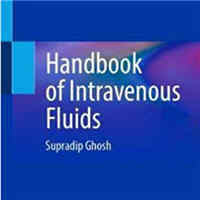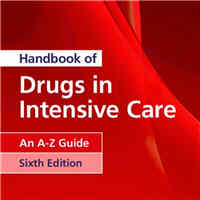Tag: PEEP
Long-term Cognitive Impairment After ARDS
Reducing the practical burden of cognitive recovery following critical illness depends crucially on understanding the links between brain injury and lung injury. New deficits in learning and memory, and new development... read more
Population Enrichment for Critical Care Trials
Enrichment reduces heterogeneity and will enhance the sensitivity of future trials. However, enrichment, even when it identifies more homogenous populations, may not be efficient to deploy in trials or clinical practice. Many... read more
Driving Pressure Is Associated with Outcome during Assisted Ventilation in ARDS
In patients with Acute Respiratory Distress Syndrome (ARDS), plateau pressure, driving pressure, and respiratory system compliance can be measured during assisted ventilation, and both higher driving pressure and lower compliance... read more
Vasoactive Medication and Randomized Clinical Trials
Vasoactive medication is one of the cornerstones in the treatment of critically ill patients in shock. Shock can be defined as a failure of the circulatory system to provide adequate tissue perfusion resulting in cellular... read more
Does high PEEP prevent alveolar cycling?
Acute respiratory distress syndrome (ARDS) patients need mechanical ventilation to sustain gas exchange. Animal experiments showed that mechanical ventilation with high volume/plateau pressure and no positive end-expiratory... read more
Ultrasound for Lung Monitoring of Ventilated Patients
In the intensive care unit, patient lung ultrasound provides accurate information on lung morphology with diagnostic and therapeutic relevance. It enables clinicians easy, rapid, and reliable evaluation of lung aeration and... read more
Systemic Early Neuromuscular Blockade in ARDS – The ROSE Trial
The early use of neuromuscular blocking agents in the setting of moderate-to-severe acute respiratory distress syndrome (ARDS) was previously understood to confer a survival advantage at 90 days, based on the outcomes of... read more
Early Neuromuscular Blockade in the ARDS
Among patients with moderate-to-severe ARDS who were treated with a strategy involving a high PEEP, there was no significant difference in mortality at 90 days between patients who received an early and continuous cisatracurium... read more
Airway Closure during Surgical Pneumoperitoneum in Obese Patients
In obese patients, complete airway closure is frequent during anesthesia and is worsened by Trendelenburg pneumoperitoneum, which increases airway opening pressure and alveolar pressure: besides preventing alveolar derecruitment,... read more
Driving Pressure in Airway Pressure Release Ventilation: a fool’s errand?
In this post I will briefly explain and critique their mathematical approach, propose a simpler equation for estimating PEEPi in APRV [based on far fewer physiological assumptions] and finally reaffirm why, in my opinion,... read more
Neuromuscular Blockade for ARDS Was No Help, In Supine Patients
Continuous neuromuscular blockade for severe ARDS became common practice after the ACURASYS trial showed it reduced mortality by an absolute 9%. A larger trial, ROSE, now finds no benefit of the therapy over usual care, but... read more
Tidal Volume Strategies for those without ARDS
This paper justifies utilizing a higher tidal volume strategy for our patients without primary ARDS/pulmonary disease. This can be very useful. Patient comfort and patient-ventilator synchrony are extremely important. This... read more
Applied Physiology at the Bedside: Volumetric Capnography
Volumetric capnography is the graphical representation of the partial pressure of carbon dioxide (CO2) versus exhaled volume. This measurement is made noninvasively at every breath by a combination of flow and CO2 sensors,... read more
Determination of Brain Death Under Extracorporeal Life Support
The worldwide use of extracorporeal lung/life support is increasing in severe lung failure (veno-venous extracorporeal membrane oxygenation, vvECMO) or in cardiac arrest/severe circulatory failure (veno-arterial ECMO, vaECMO).... read more
Effect of Titrating PEEP with Esophageal Pressure-Guided Strategy vs Empirical High PEEP-Fio2 Strategy on Death and Days Free From Mechanical Ventilation Among Patients With ARDS
Among patients with moderate to severe Acute Respiratory Distress Syndrome (ARDS), PES-guided positive end-expiratory pressure (PEEP), compared with empirical high PEEP-Fio2, resulted in no significant difference in death... read more
The Shocked Intubation: Definitive Airway Sans Hypotension
Not many aspects of Emergency Medicine define our specialty better than resuscitation, and few concepts exemplify resuscitation better than shock and intubation. Yet few words together strike greater fear in the minds of... read more
Adjunct and Rescue Therapies for Refractory Hypoxemia
Prone position, inhaled nitric oxide, high frequency oscillation, extra corporeal life support. The mortality of severe acute respiratory distress syndrome (ARDS), defined with a PaO2/FiO2 ratio of 100 mmHg... read more
Prone Positioning for a Morbidly Obese Patient with ARDS
Since the description in the 1970s of external positive end-expiratory pressure for acute respiratory distress syndrome (ARDS), the optimum level of external positive end-expiratory pressure remains unresolved. In the 1990s,... read more
High Flow Nasal Cannula (HFNC) – Part 1: How It Works
The use of heated and humidified high flow nasal cannula (HFNC) has become increasingly popular in the treatment of patients with acute respiratory failure through all age groups. I first started using it as a pediatric intensive... read more
Oxygenate, Ventilate, Do No Harm
Emergency physicians (EPs) are experts in emergent airway management and thus must be confident managing mechanical ventilation. Hospital-wide bed shortages mean that EPs will be managing admitted patients for longer periods... read more
Effect of Decompressive Laparotomy on Organ Function in Patients with Abdominal Compartment Syndrome
Decompressive laparotomy has been advised as potential treatment for abdominal compartment syndrome (ACS) when medical management fails; yet, the effect on parameters of organ function differs markedly in the published literature.... read more
Positive End-Expiratory Pressure Lower Than the ARDS Network Protocol Is Associated with Higher Pediatric ARDS Mortality
Patients with PARDS managed with lower PEEP relative to FiO2 than recommended by the ARDSNet model had higher mortality. Clinical trials targeting PEEP management in PARDS are needed. This was a multicenter, retrospective... read more









